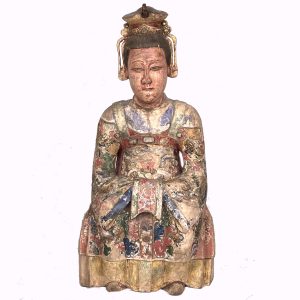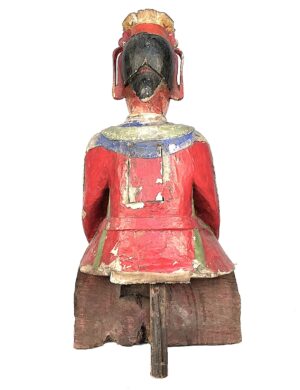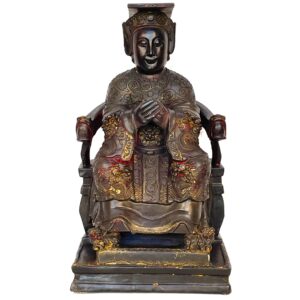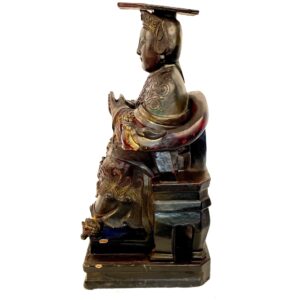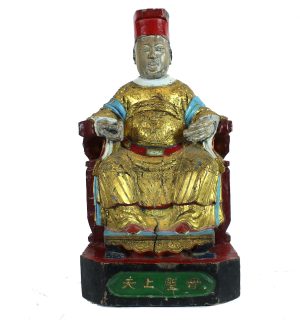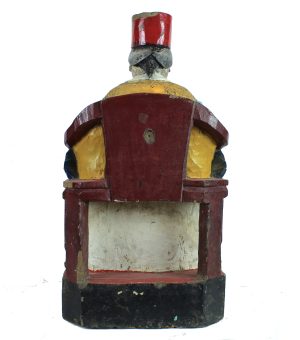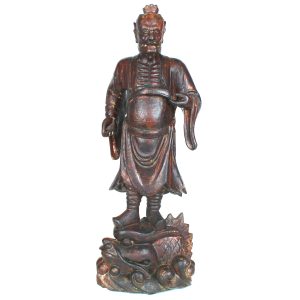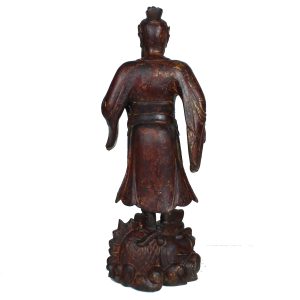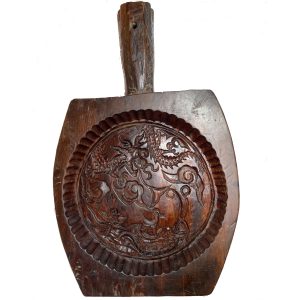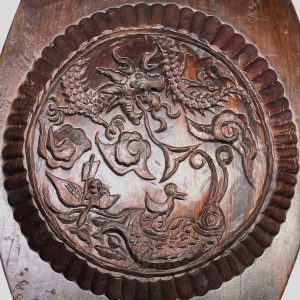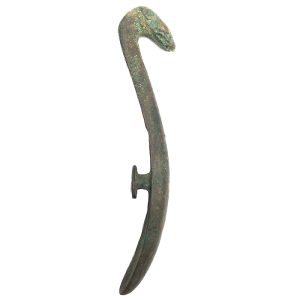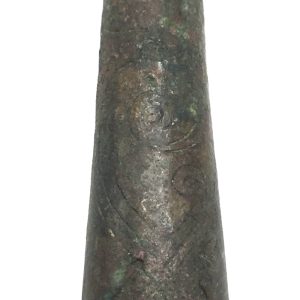-
Sale!


$3,250.00 Original price was: $3,250.00.$2,200.00Current price is: $2,200.00.
H: 31.5″ W: 16.25″ D: 10.5″ | CALL 213-568-3030 OR EMAIL [email protected] FOR SHIPPING.
Rare, antique Mazu portrayed as a sanctioned goddess revered in coastal China and Taiwan. Wears Empress headdress with a phoenix, Vibrant robes with shinning inset glass jewels to be seen at sea by sailors needing assistance. Authentic images are rare in the market
-
Sale!


$1,050.00 Original price was: $1,050.00.$650.00Current price is: $650.00.
H: 15.375” W: 8.625” D: 7.5” | CONTACT US AT 213-568-3030 or email [email protected] for SHIPPING.
Mazu, protector of sea, is portrayed as the imperially sanctioned “Empress of Heaven” on an elaborate, horseshoe shaped dragon throne, holding a hu tablet, with elegant dragon robes, official’s girdle, Empress headdress and small feet on gilt fu lion foot rest.
-
Sale!


$1,450.00 Original price was: $1,450.00.$875.00Current price is: $875.00.
H: 19.25″ W: 10″ D: 8.75″ |CALL 213-568-3030 OR EMAIL [email protected] FOR SHIPPING.
Seated imperiously on a horseshoe chair with carved title “Holy Mother in Heaven,” Mazu is depicted in the imperial style, with a regal flat topped headdress, elaborate robes with dragons, official’s girdle in red and gilt. In excellent condition after years of use.
-


$795.00
Initially linked to the Big Dipper in Chinese mythology, Wen Chang is worshipped in the 3rd and 8th months as the God of several spheres: Literature, Books and Writing, Education, Learning and Examinations and is the patron saint of scholars. As one of the revered Taoist-deities, hero and one of the house-gods closely associated with…
-
Sale!


$425.00 Original price was: $425.00.$215.00Current price is: $215.00.
H: 16.5″ W: 10.5″ D: 2.25″ CALL 213-568-3030 OR EMAIL [email protected] FOR SHIPPING QUOTE
This finely detailed hardwood mold was used to make sweetmeats confections, perhaps mooncakes for the Chinese Autumn Moon Festival. It is covered with deeply carved propitious symbols for marital harmony, sons and successful endeavors: a four clawed dragon for fertility, two ducks symbolizing marital bliss and harmony, one atop a carp for conjugal bliss and achieving noble rank and a boat with a sail for making all this easy sailing. This would be a great accessory or gift (especially for weddings) to spice up any kitchen.
-


$485.00
H: 4.1″ W: 1 ” D:.625 ” | FREE SHIPPING WITHIN CONTINENTAL U.S.!
In the Han, belt hooks became a symbol of wealth, high status and power hung vertically from belt holes used in life and buried with the deceased for his journey to the afterlife . Ornamented with incised decoration this beautiful piece is dragon shaped with beautiful verdigris deposits.
End of content
End of content

